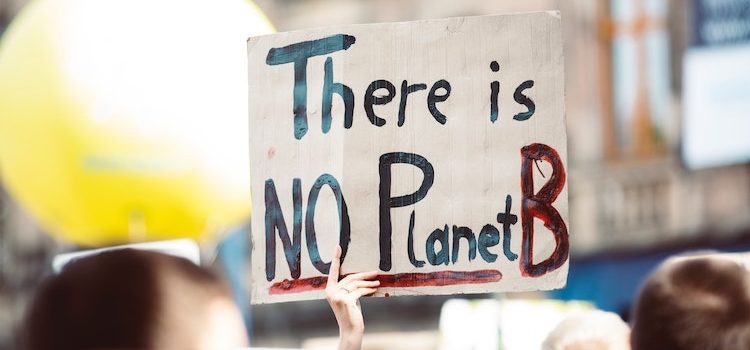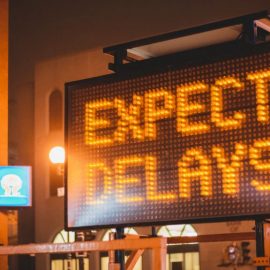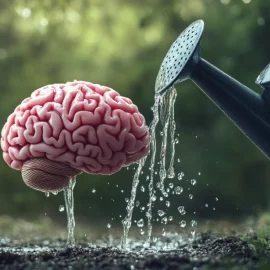

This article is an excerpt from the Shortform book guide to "Thank You for Being Late" by Thomas L. Friedman. Shortform has the world's best summaries and analyses of books you should be reading.
Like this article? Sign up for a free trial here .
What is the connection between globalization and climate change? Will the Earth be able to withstand the effects of accelerating globalization?
As a result of the accelerations in technology and globalization, climate change is also accelerating at a pace greater than anything seen before in human history. For the most part, the planet has been good at maintaining equilibrium. Today, however, changes are happening so fast and so globally that we’re approaching the limit of the planet’s ability to buffer the climate.
In this article, we’ll discuss the effects of globalization and its implications for the planet Earth.
Globalization and Climate Change
The earth formed about 4.6 billion years ago and scientists divide this time into chunks (epochs, periods, and eras) based on major events that happened at certain times.
For most of the earth’s existence, the climate swung between hot periods and ice ages and human life as we know it couldn’t exist—the climate was too unpredictable for agriculture, city-building, or industrial revolutions.
Then, after the last major ice age approximately 11,500 years ago, the earth entered the Holocene epoch. In the Holocene, the climate and environment created a perfect balance for human life. The atmosphere contained the right amount of gases to keep the global temperature survivable, forests released enough oxygen to make the atmosphere breathable, and freshwater was plentiful.
During the Industrial Revolution, however, human activity started to affect the balanced conditions of the Holocene. For example, burning fossil fuels released greenhouse gases, such as carbon dioxide, into the atmosphere. Greenhouse gases trap heat in the earth’s atmosphere, which warms the planet.
In the 1960s-1970s, middle classes all over the globe emerged and more people began driving cars and flying in planes, both of which release carbon dioxide. Middle classes also began living in single-family homes and using more resources and energy.
According to some scientists, we’re about to enter (or already have entered) a new epoch—the Anthropocene, a period in which changes to the environment are caused by humans.
(Shortform note: For more information on how humans have changed the earth, read our summary of Elizabeth Kolbert’s The Sixth Extinction.)
Planetary Boundaries
In 2008, a group of earth scientists came up with the idea of planetary boundaries. These boundaries are the limit of how much we can change the earth before the changes become permanent. Permanent change is bad news—modern society is based on the environment we live in and modern infrastructure may no longer work in a changed world.
The baseline for all of the boundaries is the conditions of the planet in preindustrial times. There are nine boundaries, some of which we’re within, some of which we’ve exceeded:
We’re Safely Within the Boundaries
1. The ozone layer is a shield in the atmosphere made of a gas called ozone. This layer protects the planet from the sun’s ultraviolet radiation, which can cause skin cancer. In the 1970s, scientists learned that chlorofluorocarbons (CFCs), a human-made chemical, were damaging the ozone layer. In 1989, the world collectively banned the use of CFCs and the ozone layer recovered.
- The boundary: no more than a 5% loss from preindustrial levels.
We’ve Exceeded the Boundaries
2. Global warming is an increase in the average global temperature since preindustrial times. The global temperature is affected by the presence of carbon dioxide, a greenhouse gas, in the atmosphere. The more carbon dioxide there is, the more heat the atmosphere retains.
- The boundary: no more than a two-degree Celsius increase since preindustrial times, and no more than 350 parts per million carbon dioxide concentration.
- Where we are: 400 ppm.
3. Biodiversity is the number of species on the planet and the habitats they live in. Biodiversity is closely related to climate—trees take in carbon dioxide and trees require the presence of other living creatures to survive such as pollinators, soil microorganisms, and animals that spread their seeds. Naturally, 0.0001% of species go extinct per year.
- The limit: no more than a 10% loss of biodiversity from preindustrial times, and no more than a 0.001% loss of species per year.
- Where we are: in parts of Africa, biodiversity has dropped to 84% of preindustrial levels, and species loss is between 0.001% and 0.01% per year.
4. Deforestation is loss of forests and trees.
- The limit: no more than a 25% loss of the planet’s forest cover since preindustrial times.
- Where we are: 38%.
5. Biogeochemical flows refer to the number of nutrients in the environment. Nutrients such as phosphorus and nitrogen are necessary for life—if plants and animals don’t have enough, they can’t grow—but the presence of too many nutrients chokes them. Nutrients are found in fertilizers and pesticides and we’re currently overusing these products.
- The limit: 25% less than we’re currently using.
We’re Toeing the Line
6. Ocean acidification is the ocean’s absorption of carbon dioxide. When carbon dioxide mixes with water, the reaction produces carbonic acid. This acid dissolves calcium carbonate, which is a key ingredient of the shells of marine organisms. The acid also harms coral reefs and fish.
7. Freshwater use is the amount of water we can take from groundwater sources and rivers. If we take too much water, wetlands and rainforests will dry out.
8. Atmospheric aerosol loading is the tiny pollution particles in the atmosphere—such as the ones that make up smog—that come from burning fossil fuels. Pollution blocks sunlight and makes it more difficult to breathe.
9. Chemical pollution is the release of chemicals such as plastic and nuclear waste into the environment. These compounds would never form naturally and affect the environment in unpredictable ways—they might even eventually change organisms’ DNA.

———End of Preview———
Like what you just read? Read the rest of the world's best book summary and analysis of Thomas L. Friedman's "Thank You for Being Late" at Shortform .
Here's what you'll find in our full Thank You for Being Late summary :
- The problems that arise when the world changes faster than humanity can adapt
- How to adapt to technology, globalization, and climate change
- The importance of taking time to reflect and reorient






